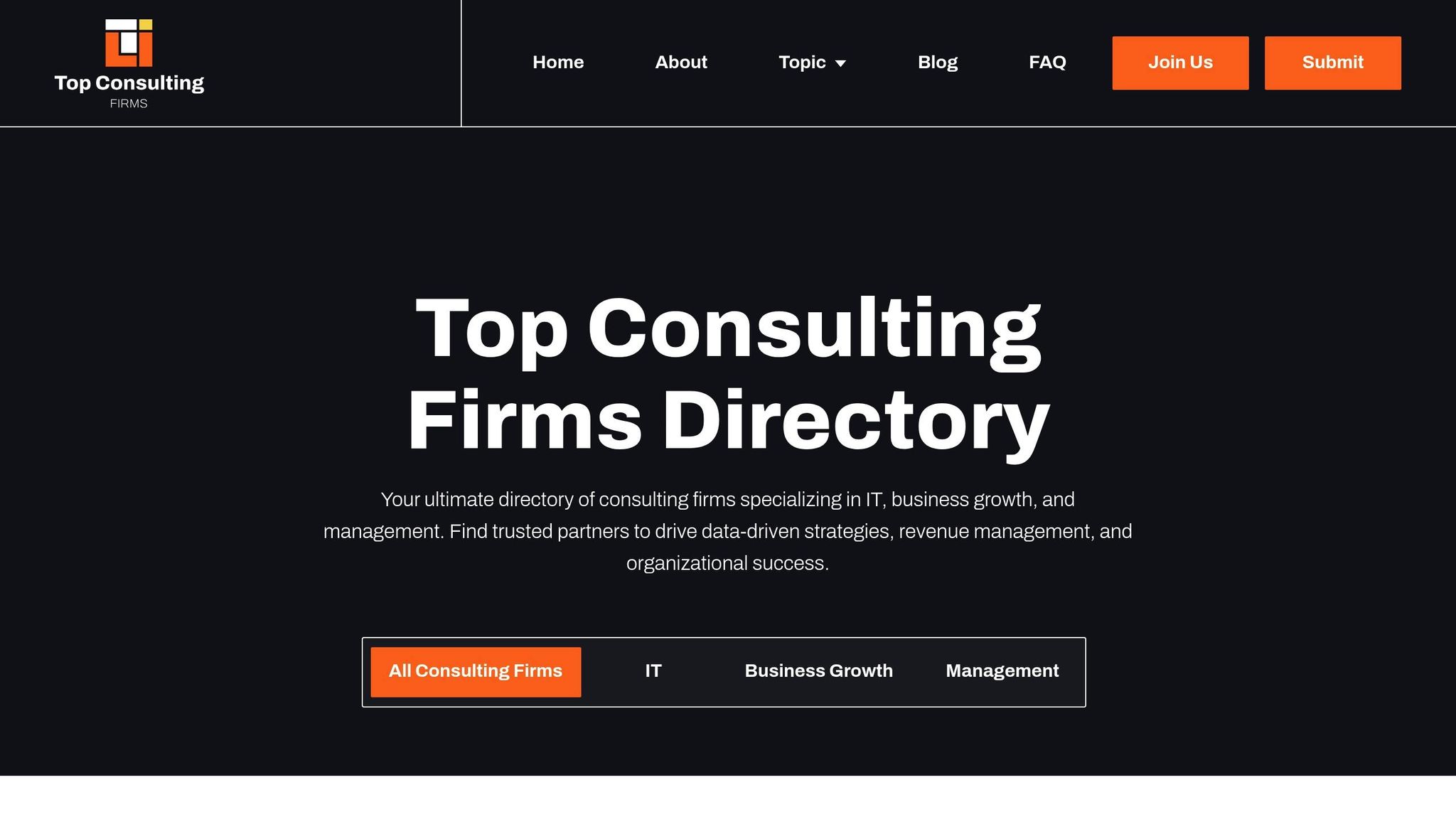Creating campaigns that connect with diverse audiences requires understanding their unique values, beliefs, and behaviors. Here’s why it matters and how to do it:
- Why It’s Important: Minority groups in the U.S. have a combined buying power of $3.9 trillion. Consumers increasingly expect brands to reflect diversity, with 70% of Gen Z trusting brands more when they see representation in ads.
- Key Steps:
- Set Clear Goals: Focus on meaningful representation and language that aligns with your audience’s experiences.
- Research Deeply: Use market research to understand cultural differences and consult local experts for nuanced insights.
- Tailor Messaging: Adapt language, visuals, and themes to reflect the audience’s values while maintaining your brand identity.
- Test and Improve: Use diverse focus groups and community feedback to refine your campaigns.
- Partner with Experts: Work with specialists to ensure your campaigns resonate and avoid missteps.
Effective campaigns require thoughtful planning, research, and collaboration to build trust and engagement with diverse communities.
The Most Important Skill for Marketers in 2024: Cultural Intelligence
Researching Cultural Differences in Target Markets
Grasping cultural differences takes more than just surface-level observation - it demands thorough research. The U.S. market is far from uniform; consumer preferences and behaviors shift significantly across regions, ethnic groups, and communities. A person’s cultural background shapes how they interpret and respond to advertising, influencing their thoughts, emotions, and actions. To connect meaningfully, businesses need focused market research that uncovers genuine cultural insights.
Using Market Research to Identify Cultural Insights
Effective market research is the backbone of campaigns that respect cultural nuances. However, it requires careful planning to uncover insights that reflect the lived experiences of diverse communities. The U.S. dominates the global market research industry, generating about $28 billion annually - over 40% of the worldwide total. To make this research impactful, businesses should design questions that account for cultural subtleties, use multiple distribution channels to reach audiences with varying levels of technological access, and build trust by being transparent about how data will be used.
"Market research is often designed, executed, and analyzed without a robust understanding of cultures, how to study cultures, and the theories involved in such an endeavor."
– Autumn D. McDonald, owner of ADM Insights & Strategy
Ethnographic research, which involves observing people in their natural environments, is particularly useful. It reveals what individuals actually do, rather than relying solely on what they claim to do. To truly understand consumer behavior, research should focus on key elements like cultural affinity, levels of acculturation, and what is deemed acceptable within different communities.
Consulting Local Experts for Guidance
Data alone can’t tell the full story - local expertise is equally critical. Partnering with cultural experts provides insights that traditional research methods might overlook. These professionals bring a deep understanding of regional markets, including specific preferences, purchasing habits, and cultural dynamics that can determine a campaign’s success or failure. By leveraging their knowledge, businesses can craft messages that resonate with diverse audiences, meeting the unique expectations of different cultural groups.
The results of involving local experts can be striking. For instance, Gillette increased its market share among Orthodox Jews from 3% to 15% in just two months by addressing specific community needs. Similarly, Unilever’s Dove Campaign for Real Beauty achieved global acclaim after cultural consultants helped shape its approach to beauty standards and regional expectations.
Beyond messaging, local experts help businesses navigate regulatory complexities, ensuring compliance with state and federal laws to avoid costly errors. They can also facilitate partnerships with trusted local organizations, influencers, or retailers, strengthening a brand’s credibility within the community.
"Understanding local markets is a vital part of any successful business. Even in places that might seem similar, there are always local differences that must be tapped into and understood."
– University of Waterloo
Using Tools for Regional Data Analysis
While local experts offer invaluable context, regional data analysis quantifies trends that can refine marketing strategies. Combining these approaches allows businesses to create campaigns grounded in both measurable data and cultural understanding. Regional consumer data can reveal demographic changes, shifts in purchasing power, and preferences unique to different areas. For example, Hispanic Americans now represent the largest minority group for the first time in 200 years, and the combined purchasing power of major minority groups has reached $1 trillion. Tools like regional mapping can identify cultural clusters and migration patterns, helping businesses allocate budgets and deploy campaigns more strategically.
Social listening platforms add another layer by providing real-time insights into how communities discuss brands, products, and cultural topics. This helps businesses stay aligned with emerging trends and avoid missteps. Additionally, consumer behavior analytics can highlight purchasing habits, preferred communication channels, and response rates across cultural segments - practical information for fine-tuning campaign timing, messaging, and media placement.
Creating and Customizing Campaign Content
Using cultural insights to shape your campaign content ensures your messaging resonates with diverse U.S. audiences. This involves adapting your themes, visuals, and messaging to reflect the values and preferences of different groups. The goal is to strike a balance between staying true to your brand and creating content that genuinely connects with specific communities.
Adapting Messaging to Local Audiences
To tailor your messaging effectively, you need to understand how different groups interpret language, symbols, and communication styles. This involves aligning your strategy with the values, customs, and norms of each audience. Consider linguistic nuances, cultural references, and societal expectations that influence how your brand’s voice is received.
Here’s why this matters: minorities in the U.S. wield $3.9 trillion in buying power, and 83% of millennials are more likely to engage with brands whose content reflects their values. That’s a massive opportunity to connect with your audience on a deeper level.
Visuals also play a critical role in cultural adaptation. Colors, images, and symbols can carry vastly different meanings depending on the audience. A great example is Coca-Cola’s Ramadan campaigns, which are designed to align with Muslim practices. Similarly, McDonald’s offers vegetarian options tailored to India, and Starbucks adjusts its menu and store designs in China.
Language adaptation goes beyond just translating words. It’s about adjusting tone, humor, formality, and even pacing to feel natural and relatable to specific communities. For instance, humor that works in one culture might fall flat in another. The key is to adapt while keeping your brand voice consistent and recognizable.
While messaging captures cultural nuances, authentic visuals strengthen that connection.
Ensuring Representation and Inclusivity
Representation in imagery should feel genuine and go beyond surface-level diversity. It’s not about ticking boxes; it’s about creating content where everyone feels seen and included. This involves thoughtful representation of race, gender, age, body types, disabilities, socioeconomic backgrounds, sexual orientations, religions, and cultures.
The numbers back this up: 64% of consumers engage with brands after seeing inclusive ads, and 74% are more likely to buy from brands that reflect them in their visuals.
Authenticity is key. Avoid tokenism, stereotypes, or anything that feels forced. Use real people and authentic stories instead of relying on generic stock photos. Partnering with community members or creators can help produce relatable, high-quality content.
To ensure inclusivity, conduct regular audits of your visuals to identify gaps. Make your graphics accessible by using high-contrast visuals, readable text, and alt-text descriptions. Consider the layered identities of your audience - people’s experiences are multifaceted, and your representation should reflect those complexities.
Avoid clichés and ensure your narratives accurately represent the communities featured. Representation should feel natural and aligned with your campaign’s context, rather than being forced into every image. The goal is to create content where diverse audiences can see themselves authentically reflected.
While visuals and messaging should adapt to local cultures, maintaining your brand’s identity is equally important.
Balancing Localization and Brand Consistency
Cultural adaptation doesn’t mean compromising your brand’s identity. The challenge is identifying which elements of your brand are non-negotiable and which can adapt to local contexts. A cultural adaptation guide can help you maintain consistency while allowing flexibility where needed.
Core values should remain constant, but their expression can shift to align with local cultures. Nike provides a strong example with its "Da Da Ding" campaign in India, which celebrates Indian athletes while addressing relevant social issues.
Consistency in visuals - such as logos, color schemes, and design principles - can anchor your brand. At the same time, flexibility in imagery, symbols, and local references allows you to connect with specific audiences. For example, Dove’s "Real Beauty" campaign in India challenged local beauty stereotypes while staying true to its global message of authenticity.
Testing is crucial. Share your localized content with a sample audience to gather feedback and refine your approach. Partnering with local influencers who understand the market and have strong connections with their followers can also validate your strategy.
Lastly, ensure compliance with local advertising laws while upholding your brand’s ethical standards. This might involve tweaking claims or disclaimers to meet legal requirements without compromising your message.
To maintain long-term success, document your successful adaptations and create a framework that can guide future campaigns. This approach helps you expand into new markets while preserving the core elements of your brand that drive loyalty. Cultural sensitivity, when done right, enhances your brand’s ability to connect without losing its identity.
sbb-itb-97f6a47
Testing and Improving Campaigns
Pre-testing campaigns is essential to catch errors and fine-tune your messaging. Gathering input from different perspectives helps refine your approach while staying consistent with your brand identity.
Pre-Launch Testing with Diverse Focus Groups
Using focus groups made up of diverse participants can give you a clearer picture of how your campaign resonates across various communities. Including people from different racial, ethnic, age, and gender groups ensures that your audience feels represented in your messaging. A diverse decision-making team can further enhance your awareness of cultural subtleties, while cross-cultural consumer research provides deeper insights into buying habits, attitudes, and lifestyles.
To make your campaign more accessible, use straightforward language and offer multiple language options. Additionally, consult individuals familiar with specific cultural contexts to review your strategy and messaging for accuracy. This early stage of testing lays the groundwork for stronger community engagement.
Gathering Community Feedback
Once your campaign is live, community feedback becomes a powerful tool for aligning your messaging with cultural nuances. Social listening is particularly effective here: companies that excel in this area report a 17% increase in customer satisfaction, and 62% of marketers use social listening tools to track audience preferences.
Leverage tools like surveys, polls, feedback widgets, and interviews to gather real-time insights. For instance, 77% of African American and 80% of Hispanic consumers are active on at least one social media platform, and engaging with these audiences can significantly boost brand recall. As Lindsay Kolinsky, Director of Marketing at okendo.io, puts it:
"Community engagement means talking with customers, not at them, and creating strong relationships between brands and their customers that lead to increased loyalty and advocacy."
These insights can directly guide adjustments to your campaign strategy.
Updating Campaigns Based on Feedback
Incorporating feedback effectively requires a structured, data-driven approach. Assign a team member who understands your brand's voice to oversee this process. Focus on feedback that aligns with your audience's needs and your brand's goals. Use tools like sentiment analysis and theme analysis to identify patterns and gauge emotional responses.
When making updates, communicate the reasons behind these changes with your team. Test new messages on a smaller scale to ensure they resonate. For example, 37% of African American consumers are more likely to support brands that take a stand on social issues, so any adjustments should reflect genuine cultural awareness.
Keep your brand guidelines up to date to maintain consistency in your messaging. Regular training sessions for your team can reinforce these principles, and AI-powered tools can help ensure your content aligns with your guidelines before final approval. A unified data system that integrates customer touchpoints and analytics can also streamline this process.
Partnering with Experts for Cultural Awareness
When it comes to creating campaigns that resonate across diverse communities, working with external experts can make all the difference. While research and local insights are a solid foundation, culturally sensitive campaigns often require a level of expertise that many businesses don’t have in-house.
Why Consulting Firms Matter for Marketing Campaigns
Consulting firms bring a deep understanding of cultural nuances that influence consumer behavior and brand perception. This knowledge is critical for shaping effective international marketing strategies.
Cultural consultants can help businesses adapt to local preferences and expectations, ensuring campaigns feel relevant and meaningful to specific communities. They also play a key role in minimizing miscommunication by crafting messaging that aligns with the cultural norms of the target audience.
And the results speak for themselves. Research shows that 70% of companies that localized their campaigns to reflect cultural values reported a noticeable boost in engagement. Additionally, 78% of successful marketers integrate both qualitative and quantitative data into their strategies.
Beyond engagement, consulting firms can help companies avoid costly missteps that could harm their reputation or cause them to miss opportunities. For example, Unilever’s Dove brand worked with cultural consultants to create the “Campaign for Real Beauty.” This global initiative was informed by extensive research into beauty perceptions and societal norms, sparking conversations about body positivity while driving sales and strengthening the brand.
Simplifying the Search with the Top Consulting Firms Directory

Finding the right cultural marketing expert can feel overwhelming, but the Top Consulting Firms Directory simplifies the process. This resource connects businesses with leading firms specializing in areas like digital transformation, strategic management, and marketing.
The directory offers a curated list of firms with expertise in digital marketing, branding, and market expansion. These firms provide tailored support to help businesses navigate cultural complexities in their campaigns. Whether you need help developing culturally aware strategies or refining operational processes to respect cultural differences, this directory is a time-saving tool that ensures you find the right partner for the job.
How to Choose the Right Consulting Partner
Choosing the best consulting partner for your needs involves evaluating several key criteria to ensure they align with your goals.
- Expertise and Industry Experience: Look for firms with a proven track record in strategic marketing and cultural insights specific to your target regions. For example, a Tunisian IT company entering the Fintech market prioritized consultants with deep Fintech expertise, knowledge of North African markets, and fluency in Arabic or French.
- Geographic Presence and Credibility: Firms with a strong local presence can provide invaluable insights into languages, customs, and cultural nuances. Their credibility ensures that your messaging will resonate authentically with your audience while avoiding miscommunication.
- Budget and Delivery Model: It’s important to balance the firm’s reputation and expertise with your budget. Decide whether you need high-level strategic advice or hands-on implementation and choose a firm whose approach fits your needs.
As consulting expert Hélène Laffitte explains:
"In an ideal world, you would like consultants to have the right expertise, geographical coverage, and the availability to meet your project needs. But each company has a unique set of markers and a unique consulting 'DNA profile.' Being able to draw this profile will allow you to understand the range of projects where this particular consulting firm brings more value."
Before committing, create a clear Request for Proposal (RFP) that outlines your project’s scope, deliverables, and timeline. Conduct preliminary calls with shortlisted firms to assess their interest and capabilities. By identifying your must-haves versus nice-to-haves, you can streamline the selection process and ensure your campaign is both culturally relevant and strategically effective.
Conclusion and Key Takeaways
Crafting campaigns with cultural awareness not only strengthens connections with diverse audiences but also drives measurable business outcomes. Research highlights that when brands prioritize cultural understanding in their strategies, they create a welcoming space that resonates deeply with modern consumers. Let’s revisit the essential steps discussed earlier.
Recap of Steps to Build Culturally Aware Campaigns
At the heart of culturally sensitive campaigns lies thorough research. Understanding the nuances, traditions, and customs of your target audience is the cornerstone of any successful strategy. Coupled with training and expert insights, this ensures your messaging feels genuine and respectful.
Another critical step? Rigorous pre-launch testing. Engaging diverse focus groups and gathering community feedback early in the process helps identify potential pitfalls before a campaign goes live.
The numbers speak for themselves. For instance, 76% of consumers are more likely to consider products when information is presented in their native language. Consistent messaging can increase revenue by 10–20%. Additionally, 72% of global consumers expect brands to understand local preferences, while 68% value a cohesive global experience.
The Role of Expert Guidance
Building trust and fostering meaningful connections across different cultures requires more than just good intentions - it demands expertise. For many businesses, navigating these complexities can be challenging without external support. That’s where consulting partnerships become invaluable. Collaborating with specialists helps ensure campaigns strike the right balance between local relevance and global consistency.
The Top Consulting Firms Directory offers a streamlined way to connect with experts in digital marketing, branding, and market expansion. These professionals can guide businesses in creating culturally aware strategies that resonate with audiences while maintaining a consistent brand identity.
Success in this area isn’t static - it requires ongoing learning and adaptation. As cultural norms shift and consumer expectations evolve, expert guidance ensures your brand stays relevant, builds trust, and fosters loyalty.
Incorporating cultural sensitivity into your marketing efforts is an investment that pays off. Brands that actively seek feedback and refine their strategies not only strengthen audience connections but also avoid costly missteps that could damage their reputation. Ultimately, cultural awareness is the cornerstone of impactful and effective marketing.
FAQs
How can businesses create culturally sensitive campaigns that resonate with their audience and avoid causing offense?
To create campaigns that genuinely resonate with your audience, it’s crucial to understand the cultural norms, values, and traditions of the people you’re trying to reach. Taking the time to research these aspects helps you sidestep mistakes and ensures your message feels real and relatable.
Working with local experts or members of the community can offer insights you might not uncover on your own. Focus groups made up of individuals from the target culture can also help flag any potential problems before your campaign launches. On top of that, teaming up with local influencers can add an extra layer of cultural relevance and build trust with your audience.
When respect and understanding are at the core of your efforts, your campaigns are more likely to avoid missteps and create meaningful connections with diverse communities.
What are the best ways to research cultural differences for creating effective marketing campaigns?
To gain meaningful insights for your campaigns, begin with qualitative research techniques such as focus groups, interviews, and ethnographic studies. These methods let you dive into the subtleties of cultural behaviors and preferences, giving you a clearer picture of how people think and act.
Partnering with local experts or cultural consultants can be a game-changer. Their firsthand experience helps you navigate cultural differences and steer clear of potential pitfalls. On top of that, using social listening tools on platforms like Twitter or Instagram allows you to tap into real-time conversations and spot trends that highlight what matters most to different communities.
By blending these strategies, you can develop a deeper understanding of cultural dynamics and create campaigns that truly connect with diverse audiences across the United States.
How can brands adapt their campaigns to different cultures without losing their global identity?
To strike the perfect balance between adapting to local cultures and maintaining a unified global identity, brands need to focus on protecting their core elements - things like their mission, values, and visual identity. At the same time, they should adjust aspects like messaging, imagery, and strategies to suit the preferences of specific local audiences.
The first step is thorough market research. This helps brands pick up on cultural nuances and steer clear of any potential missteps. Partnering with local experts or influencers can also ensure that campaigns feel genuine and connect with the audience. Another helpful approach is developing cultural adaptation guidelines, which can guide teams to align their efforts across different regions while staying true to the brand’s overall identity.
Consistency is key, and regular audits paired with clear brand guidelines can help ensure that even localized campaigns still reflect the brand's global essence. This way, no matter where the audience is, the brand feels both relatable and cohesive.


